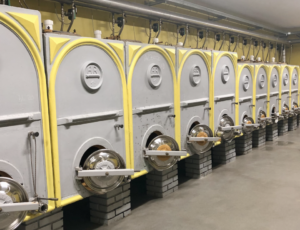Learning about wine
Cement, steel, amphora and wood are the containers for refining wine
Cement, steel, amphora, and wood—there is poetry in the refinement and preservation of wine, and it is no coincidence that this process takes place in various materials, chosen according to what the winemaker wants to achieve.
When the precious nectar of Bacchus rests, there are two crucial elements to consider: micro-oxygenation, which is the material’s ability, based on its porosity, to exchange small amounts of oxygen with the outside; this affects the wine’s colour and the roundness of the tannins. The second element to consider is the aromatic release, which determines how much the material can influence the taste of the wine more or less intensely.

Amphora, wood, cement, or steel?
Historically, amphorae are among the oldest containers made of clay; they can be of terracotta, ceramics, or stoneware depending on the firing temperature. The higher the firing degree, the lower the porosity and the oxygen exchange. Terracotta, for example, can be more porous than some woods, while stoneware has almost no porosity. Some experts argue that this material imparts an earthy nuance to the wine, while others are sceptical; however, there is consensus on its ability to maintain a constant temperature, especially when buried, according to the Georgian tradition.
Over time, amphorae have been replaced by barrels, thanks to the invention of the Celts, who sought safer containers for transport. The sizes and types of wood vary: acacia, oak, and chestnut are among the most common. The degree of toasting is crucial for the effects of micro-oxygenation and flavour release. Additionally, the age of the barrel is also important because when new, it releases the highest levels of transpiration and aromatic influence.
Recently, cement containers have emerged on the market. Here, the aromatic impact is virtually nonexistent, as is micro-oxygenation. Today, it is mandatory for the tanks to be vitrified or painted inside with food-safe paints to ensure safety.
Finally, stainless steel represents the latest innovation in wine ageing. This material does not impart aromas and offers thermal inertia that allows for slow maturation, respecting the grape variety, vintage, and territory. Steel containers are lightweight and easy to handle, as well as practical to clean.
In Conclusion
Determining the ideal material is complex; each winemaker and each winery will have their sensitivity in choosing the container that best expresses the message they wish to communicate through the wine, following personal or local traditions.
Until next time,
Elisa





